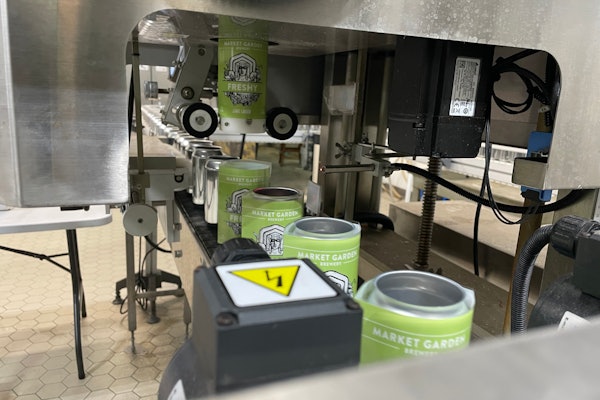Editor’s note: In a recent story, Automation World Senior Editor Stephanie Neil wrote about how Big Data and the Internet of Things will play an important role in the future of pharmaceuticals. To learn more about what role packaging might play in helping the pharmaceutical industry address multiple market pressures, Healthcare Packaging spoke with several experts in the supplier community who regularly respond to the needs of pharma manufacturers.
“In addition to lowering prices, improving quality and accelerating time to market, pharmaceutical companies face further challenges related to two factors that are compounding these challenges,” says Alan Shuhaibar, President, BellatRx. “Namely, the thinning or leaning of manufacturing operations and the vacuum left by retiring skilled labor.
“The leaning of manufacturing, which also trickles down to packaging, requires companies to produce with the challenges mentioned above, but with fewer human resources than ever before. Additionally, the skill set of a new labor force falls short of that of the retiring skilled labor pool, leaving a huge gap that pharmaceutical companies need to bridge in order to remain competitive and I hazard to say, [to remain] relevant.”
Shuhaibar suggests that two complementary approaches are being followed in packaging and processing of pharmaceuticals, leading to the call for more collaboration between pharmaceutical companies and OEM’s.
“One avenue is to make packaging equipment easier to use, setup and maintain to allow a less-skilled labor pool to achieve intended efficiencies of the equipment,” he says.“This calls for simpler, more intuitive interface with the machine (think of your smartphone), sensors and monitoring to help machines be self-diagnosing to assist with troubleshooting and problem-solving.”
And, he continues, “the relying on the Internet of Things, having the packaging equipment connected to the web to allow for up to date and collaborative short training videos, troubleshooting tips, up-to-date parts lists and manuals that are always up to date.”
The second complementary part of this drive to bridge the skills gap, says Shuhaibar, “is to improve training methods with the collaboration of the OEM to allow a less-skilled workforce to identify setup points, single position adjustments that fall into to place, and as one of my colleagues said, ‘take the artistic touch that resides at the fingertips of skilled technicians out of the setup process.’”
Packaging can’t be an afterthought
Richard A. Bahr, President and CEO of MGS Machine, voices concern that packaging sometimes seems to be an afterthought.
“Often this seems to not be included or considered in the development of the product, and how packaging might help with patient compliance, patient safety or increased stability and shelf life. There has been more consideration in recent years to safeguard transporting drugs (cold chain, drop tests and the like) as well as ensuring drug integrity (track and trace, serialization), both of which have involved the packaging operation.”
Providing depth to this perspective, Bahr points out, “we have been involved in a few cases in which we’re able to get more out of the property and plant space than the existing equipment. In one instance, we roughly doubled the output of a line with a new design that allows the client to increase output without further investment in floorspace. More efforts like this have the potential to reduce operating costs and ultimately the overall price of the delivered product to market.”
The MGS president believes co-packers and co-manufacturers should be given more consideration since their core competency is manufacturing, while “big pharma’s” might be innovation. “Perhaps there’s some wisdom in splitting those two up—let co-packers focus on manufacturing and big pharma focus on innovation.”
Omega Design Corp. Serialization Specialist Chris Siegele says, “getting the original packaging into consumers’ hands will provide opportunities to manufacturers to gather data on their end-user customers more quickly.Currently that data has to pass backwards through the supply chain, or via a third party.
“That concept will change manufacturing schedules and the size of packaging they use, but it’s a big change and therefore is not taking root yet,” he says.“One thing we believe at Omega, but we haven’t seen grab much traction in the market, is that a code on a bottle at the beginning of a packaging line gives manufacturers the opportunity to tie any data they can gather to that uniquely identifiable code.”
Packaging Hall of Fame Inductee, President of Packaging Management Institute, and packaging marketing and technology analyst Ben Miyares offers the following forward-thinking perspective:
“Electronic Data Capture (EDC) is one technology that could, I believe, migrate to primary packaging for drug trials. Using NFC (near field communication) tags, etc., EDC could provide a vast increase in patient information without occupying much/any real estate on the primary package, while eliminating the need for patient package inserts (PPIs).”
Input from material suppliers
Craig Curran, Nosco’s Vice President Sales and Marketing, says, “Pharmaceutical firms are looking for ways to reduce cost on their packaging lines. One of those ways is to receive a carton and insert already glued together rather than inserting the insert in the carton on the packaging line.This helps to reduce makeready time, speed up the line, decrease waste, and minimize reconciliation issues.”
Speeding product to market, he says, will demand that pharmaceutical firms fill orders faster. He refers to completing packaging in days, rather than weeks, saying, “Digital printing of packaging is becoming the standard.It takes time out of the prepress or graphics process as well as printing.”
Carrying less inventory could be another key step, Curran suggests.
“Pharmaceutical companies want to carry less packaging inventory, free up space and minimize the use of capital/cash.VMI programs for packaging are becoming important, allowing for the packaging to be ready and available, while also minimizing the space in the warehouse for the pharmaceutical company.”
Curran says pharmaceutical products need their OTC products to stand out on the shelf, where space is at a premium in this competitive market. “Pharma is using new forms of packaging, like thermoformed blisters with a paperboard backer, to gain attention and providethe consumer a unique experience.Pharma is also using more and more multiple-panel labels to communicate more information about their product.”
Understandably, the pharmaceutical community is focusing on serialization issues to meet regulatory and compliance issues in the U.S. and abroad.
This, says Curran, “is creating costs, but pharma is looking for ways to use variable data to improve their supply chain and learn more about their business, products, and consumers.”
Alison Schuitema, Avery Dennison Product Manager, Pharmaceuticals Materials Group North America, says, “When it comes to speed to market, packaging needs to be an important consideration. For a product like a vaccine used to treat an epidemic (i.e., vaccines for Ebola or the Zika virus), there is not always time for full-scale stability studies on the product at room temperature. In order to keep the vaccine stable and quickly move it to the area of the world where it will be used, the product needs to be kept at cold temperature—this means that the packaging must be able to function through the cold temperature environment as well.”
Schutema adds, “In parallel to the ways that the Internet of Things and Big Data are having impacts on the drugmanufacturingenvironment, they are having impacts on the drugpackagingenvironment. Equipment and sensors used to track drug product through the manufacturing process for serialization and Unique Device Identification procedures must continue to track through the packaging process as drugs are filled, labeled, and packed into a variety of different packaging systems.”

























